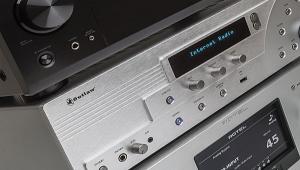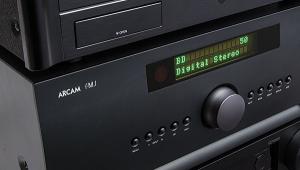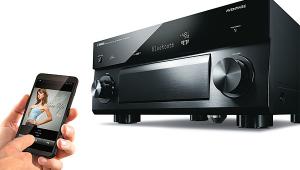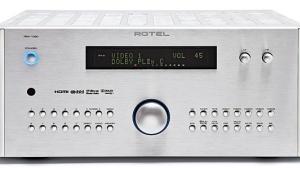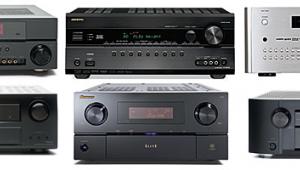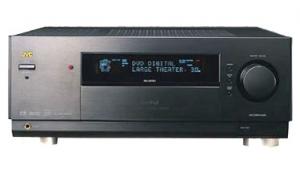Shopping for Gear: Receivers vs. Separates
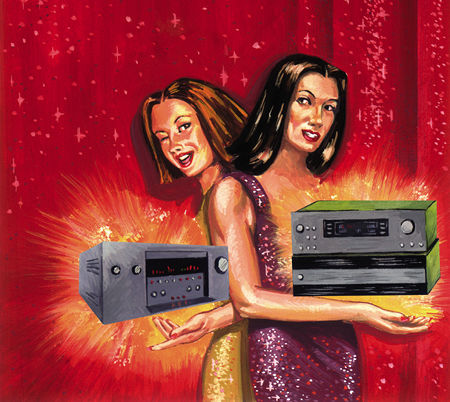
However, something has to direct the picture to that display device, something has to split all those different channels into signals that can be fed to those speakers, and something needs to drive those speakers—and in most systems that something is an audio/video receiver.
The modern AV receiver is a fabulously complex component. It serves as a signal-switching device, a control center, a digital decoder, and multiple audio amplifiers—and most receivers available these days do a pretty good job of juggling all those functions.
If you're looking for convenience and affordability, there's no question that receivers have a lot to offer, but many home theater buffs maintain that, for better performance and the flexibility that high-performance home theater requires, it's better to rely on separates—equipment that portions out different functions among individual components, each of which specializes in one specific task.
A Little History
Back in ancient times, almost all serious audio components were separates. Your preamp allowed you to switch among your radio, turntable, and, perhaps, tape deck. It was called a preamplifier because it amplified the low-level signals, such as those coming from the phono cartridge, to a level that could then be handled by the power amplifier. The preamp also controlled the system's volume and switched between different sources. Of course, that was so long ago that most hobbyists had only one channel (it was called monophonic sound, kids), and they'd probably built the whole system themselves, including the speaker.
When hi-fi caught on and companies began manufacturing audio gear, they began simplifying matters by combining the preamp and power amp into a single component called the integrated amplifier. Not long after that, manufacturers added a radio tuning section to the integrated amp and called the combination a receiver. But serious audio hobbyists continued to tout the superiority of separates. And many early receivers and integrateds did make significant compromises in quality in order to squeeze several components into a single box.
The biggest compromises in early audio receivers were caused by the power supplies and internal signal interference. When a preamplifier and power amp and tuner are housed in separate components, each has its own enclosure—which isolates the low-level audio signals of the tuner and preamp from the large magnetic fields of the power amp, for instance. This was particularly important in the days when all audio gear was powered by tubes—the voltages required by tubes, and therefore the resulting interference, could be massive—but it's still true today. The heat generated by tubes was also a significant issue, causing components to both drift in performance and age prematurely.
Enter the Audio/Video Receiver
If balancing the demands of three different components was tricky for audio designers, imagine how much more difficult the audio/video receiver made their lives. The AV receiver jams even more functions into the box: surround-sound processing, video switching (and, in some cases, amplification), and anywhere from three to five more channels of amplification. Yup, things are pretty crowded in there. Including digital and video signals in the mix makes it even harder to keep things quiet and control signal interactions.
Like early audio receivers, early AV receivers were not aimed at discerning consumers but were developed to keep costs down. Frequently, this meant that the early models sacrificed performance in order to meet attractive price points. That was enough for some consumers, but widespread dissatisfaction with the quality levels and feature sets of first-generation AV receivers led to massive improvements in both. The contemporary AV receiver is a marvelous combination of high-tech design and implementation—and the best of them offer levels of performance that approach that of high-end separates.
That said, you can always get exactly what you want when you order à la carte, no matter how good the prixe fixe menu might be. And in the world of high-end home theater, getting precisely what you want is, well, precisely what you want.
Which Is for You?
If you're on a tight budget, it's impossible to beat a receiver. If you haven't looked at AV receivers lately, you'll be surprised at what you can buy for just a few hundred dollars. Entry-level models now routinely offer sufficient power for all of the surround channels, as well as Dolby Digital and DTS decoding. Most entry-level receivers also offer composite and S-video video switching. Entry-level receivers tend to offer the most basic functions, but that's the whole point—to allow you to enjoy home theater despite budget constraints. You can always get fancy later.
Mid-level AV receivers begin to offer more comprehensive mixes of features. Depending on your requirements, the most significant features you might expect are more power and more powerful surround-sound processors. The biggest difference between mid- and entry-level receivers is in their power ratings. You start to see fairly hefty output levels when you step up the ladder. This is a good thing. To an AV system, power is like money in the rest of life—it's hard to have too much.
Many mid-to-upper-level AV receivers offer 6.1-channel decoding formats, such as Dolby Digital EX, THX Surround EX, and DTS-ES. Receivers with these options will also offer the extra channels of amplification required to make them work.
You also begin to see more connectivity options. In addition to having more of everything—analog inputs and outputs, digital inputs and outputs, video ins and outs—you get more options: optical and coaxial digital inputs and outputs; component-video inputs and outputs; binding posts instead of clip connectors. In mid-level receivers, you also start to see multizone and multiroom accommodations, such as A-Bus.
Beginning with mid-level receivers, you also buy more control. Remote controls include programmable options. Some remotes control only other components from the same manufacturer, but increasingly, remotes let you code in control sets from almost any major manufacturer, and a surprising number offer learning capabilities as well.
When you reach the upper end of AV receivers, you get even more—more power, certainly, but also more processing power, more input and output capabilities, and more flexibility-enhancing extras.
You also tend to get features that aren't necessarily obvious but that begin to blur the line between receivers and separates. Top-end receivers frequently have extremely heavy-duty power supplies and massive amounts of internal shielding that minimize potential signal interference. Analog and digital signal paths are kept separate, and video signals are meticulously controlled. The performance levels of the best AV receivers are intended to seriously challenge AV separates.
Separates That Are Not Equal—They're Better
Even though the very best receivers today offer performance that's hard to fault, that doesn't mean that receivers are the answer for everyone. High-end audio/video separates can offer performance and features that aren't necessarily available from receivers.
One obvious advantage of separates is that you can precisely match your amplifiers to your loudspeakers. Relatively few AV receivers can supply 500W per channel, but many monoblock, 2-channel, and even 3-channel power amplifiers can.
From the standpoint of pure performance, placing power amp(s) in close proximity to the speakers is optimal—and that's impossible with a receiver, although it's easy when you have a separate monoblock—a single-channel amp—for each channel.
Of course, the more specialized your requirements, the less likely they'll be accommodated by a receiver, which by its very nature is an attempt to create a one-size-fits-all solution. There is probably no application so specialized that there isn't a specialty separate component manufactured to implement it.
And there's always that indefinable but extremely important element called "pride of ownership." Some people get it from owning only the best, rarest, and/or most expensive components; others get it from combining price and performance without sacrificing satisfaction. Where you fall along that continuum will probably dictate whether you end up with separates or an AV receiver. The good news is that, whichever option you choose, you can build a very serious high-performance AV system that will repay your investment with years of home theater pleasure.
Pros & Cons
Separates
Pros
• More configuration options—mix'n'match for the power and features you need
• Optimized performance
• More flexibility of system setup and operation
• Cutting-edge choices available
Cons
• Price
• More complex system setup
AV Receivers
Pros
• Convenience
• More price options—and the only real choice below $1500
• Shorter signal paths
Cons
• Cost and space limitations demand more design compromises
• Less placement flexibility—all in one box
• Heat
- Log in or register to post comments
